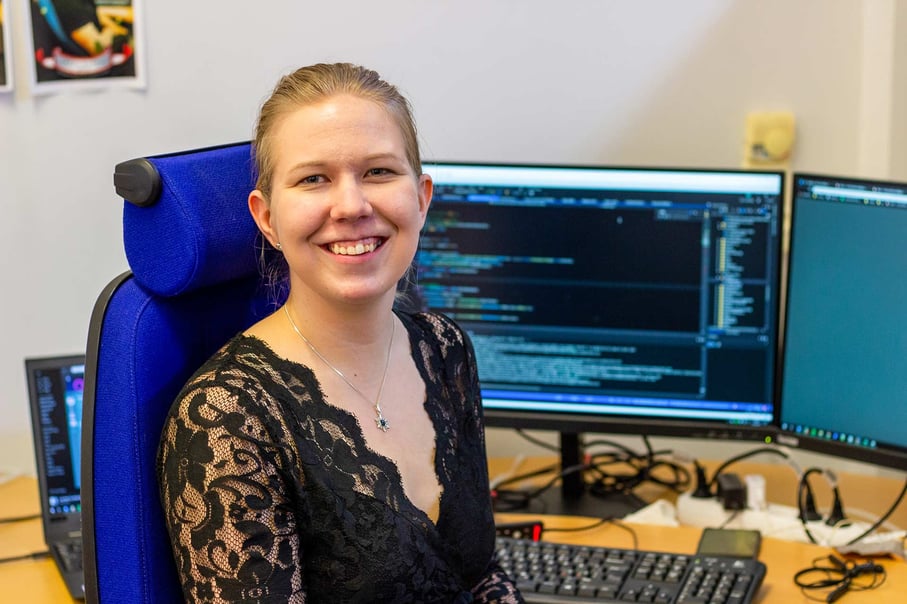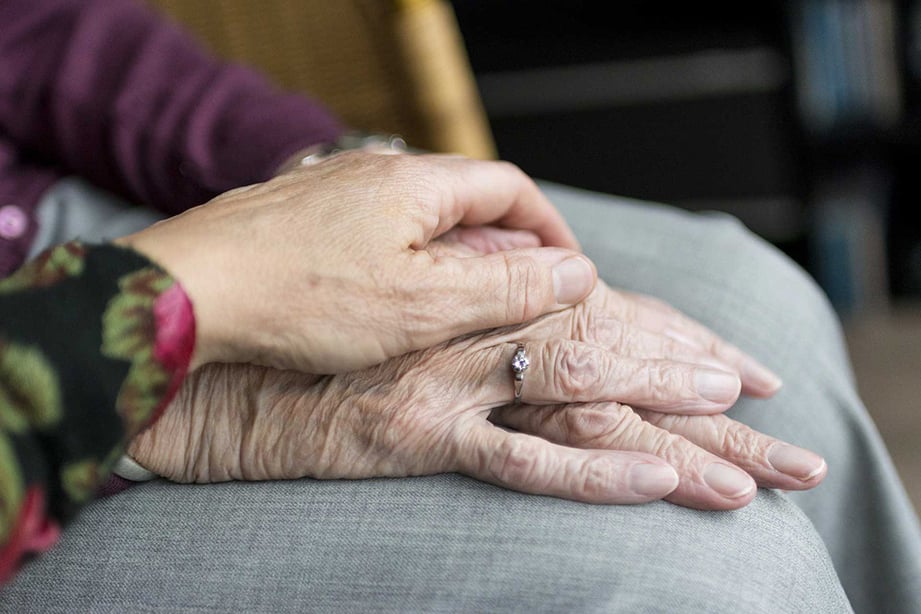 "Recently, I started work as a developer for the Evondos® medication dispensing service system. I find this very meaningful work in many ways”, says Minna Lehtomäki.
"Recently, I started work as a developer for the Evondos® medication dispensing service system. I find this very meaningful work in many ways”, says Minna Lehtomäki.
As a software designer, my duty is to analyze customer needs and identify suitable solutions for them. The next step consists of coding and testing the results. Was the result good or should we go back to square one?
"Customers are different and their needs differ. For example, I have been involved in development of a vehicle inspection system and software for intelligent electricity meters. Some projects seem more personal than others.
As an example, I recall writing code for childhood education systems during a time when my own children went to daycare. I used to think that the result of my work would be utilized by another person currently in the same situation of life, a mother or a father. It gave me quite a new angle to coding.
Improving patient safety by coding
Recently, I started work as a developer for the Evondos® medication dispensing service system. I find this very meaningful work in many ways. At the same time, I feel that I have a big responsibility resting on my shoulders.
At the design stage of the system, we collected user experiences from home nursing. What is the everyday life like for users and home nurses? What works well and what doesn’t? What are the problems related to dispensing of medications and how can they be solved?
I have acquired information on the subject matter through my own networks as well. Coincidentally, medication dispensing robots were introduced in the workplace of my mother, a practical nurse, at the same time as I started my work with Evondos. Therefore, I am very familiar with the point of view of nurses on dispensing of medications.
The Evondos service utilizes automated dispensing of medications, which is used in pharmacies. An automatic dispensing device in the user’s home informs the right time to take the medication by voice, lights or auditory signals or by phone, if necessary. The device gives the right medications dosed in pouches. Medication pouches are inside the device and the home nurse loads the machine every now and then.
Usually, people are able to take their medications based on the machine’s instructions. However, we are also prepared for errors. My mother has told me that the machine informs the home nursing staff if medications, nevertheless, remain in the machine. I have heard that patient safety has improved notably.
Human errors are removed

“At the same time, my work helps the elderly to stay in their homes longer.”
Dispensing of medications is demanding work for humans but here automation really offers a step in a better direction. Human errors are inevitable. Consequences of erroneously dispensed medications can be irreversible.
Haste and fear of errors increase the mental load of employees. Therefore, it feels good that I can help by developing a technical solution for medication dispensing. At the same time, my work helps the elderly to stay in their homes longer.
Of course, I also feel pressure on my work. I may wonder whether I have considered everything. Does it work as it should? What if the device gives unnecessary error signals? Does it give the right medications at the right time? In a way, we Evondos developers have taken a part of the mental load of nurses to carry. Fortunately, however, the system functionalities are carefully tested before delivering it to human use. Errors are removed.
Customers have applauded the product’s ease-of-use and consider it an essential tool of everyday life: in concrete terms, they have felt better. The families are also satisfied. They feel that their loved ones are now safer. I feel good to perceive my work as meaningful."
- Minna, Software Developer
Would you like to get more information?
If you want further information on our welfare and health technology services, contact us to request a free remote presentation. In addition, you may want to read the success story of Evondos.
Read more
Medical Software Development according to Medical Device Regulation (MDR) – Part 1: Software Qualification and Classification
Medical Software Development according to Medical Device Regulation (MDR) – Part 2: Conformity assessment route, software modules and impact of changes
Medical Software Development according to Medical Device Regulation (MDR) – Part 3: Quality Management System
Medical Software Development according to Medical Device Regulation (MDR) – Part 4: Medical device software lifecycle processes
Back to the Pinja Blog
Categories
- Career at Pinja (68)
- Manufacturing (48)
- Knowledge Management (45)
- Production Development (44)
- Software Partnership & Tools (42)
- Sustainability (37)
- Wood and Forestry (37)
- Bioenergy and Recycling (27)
- IT Support and Outsourcing (24)
- Ecommerce (23)
- Maintenance (22)
- Artificial Intelligence and Machine Learning (15)
- Public Services (9)
- Compliance (1)
